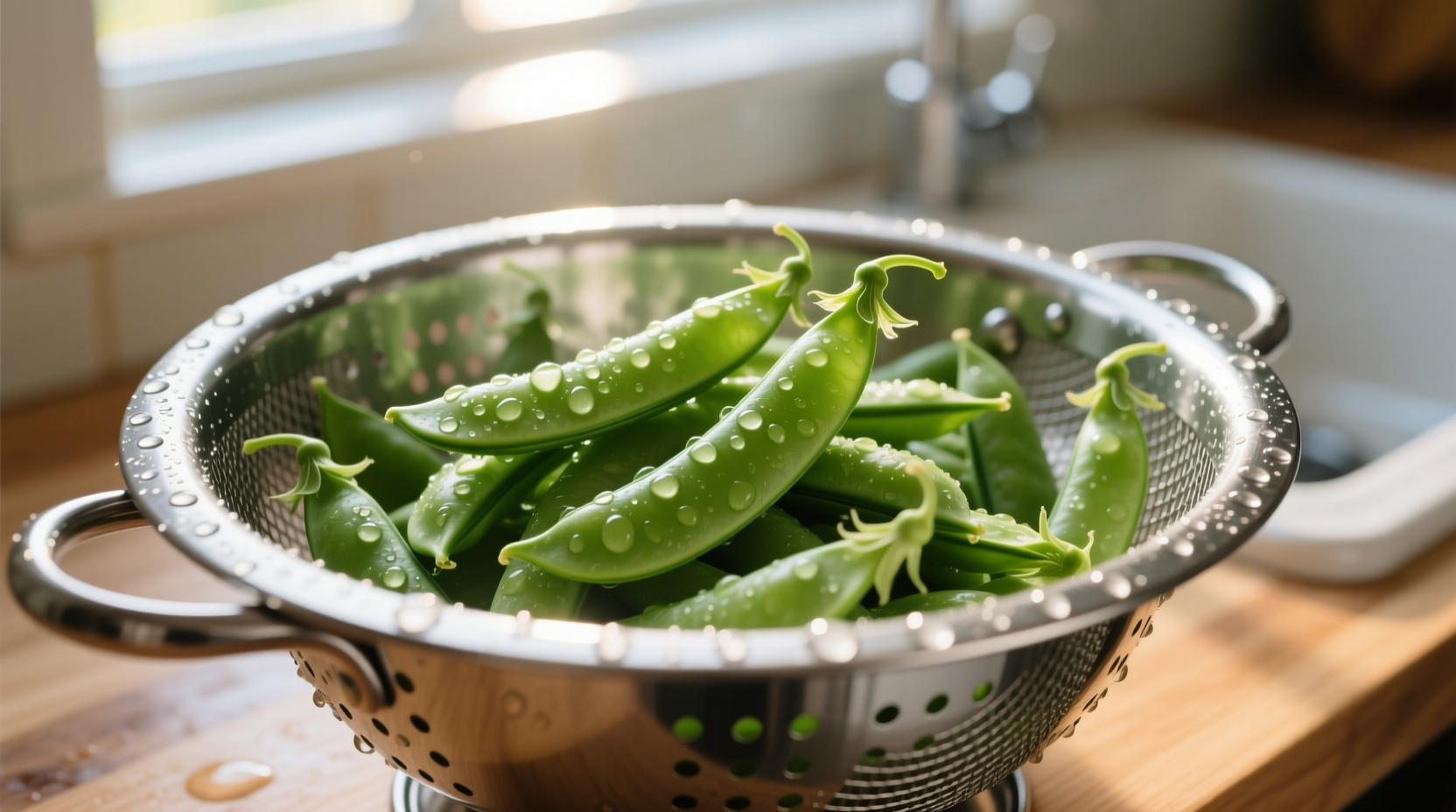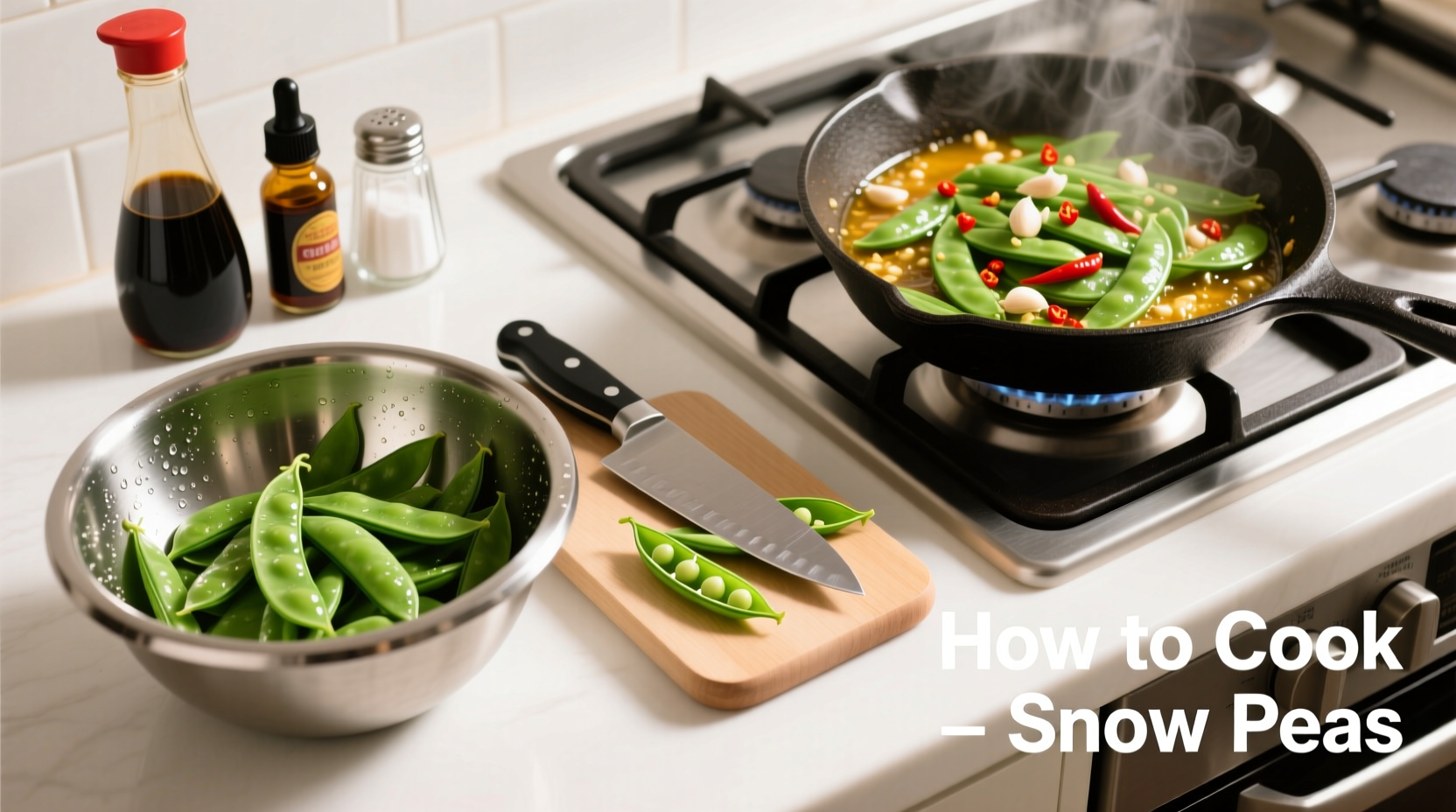The Ultimate Guide to Cooking Snow Peas Perfectly
Snow peas (also called mangetout) are delicate vegetables that require precise cooking to maintain their signature crispness and vibrant color. Unlike regular peas, you eat the entire pod, making proper preparation essential for optimal texture and flavor. When cooked correctly, snow peas offer a sweet, grassy flavor with a satisfying crunch that enhances both Asian and Western dishes.
Why Snow Peas Deserve Special Attention
Snow peas contain chlorophyll, the pigment responsible for their green color, which breaks down quickly when exposed to heat and acid. According to USDA food science research, maintaining water pH between 6.5-7.5 during cooking helps preserve their vibrant green color. The delicate nature of snow peas means they can go from perfectly crisp to unpleasantly mushy in as little as 30 seconds of overcooking.
| Cooking Method | Optimal Time | Texture Result | Best For |
|---|---|---|---|
| Blanching | 90-120 seconds | Crisp-tender | Salads, cold dishes |
| Stir-frying | 2-3 minutes | Slightly softened | Asian dishes, quick meals |
| Steaming | 3-4 minutes | Firm but tender | Nutrient preservation |
| Sautéing | 3-4 minutes | Rich flavor development | With aromatics, side dishes |
Step-by-Step Snow Pea Preparation
Selecting the Best Snow Peas
Choose pods that are bright green, flat, and crisp. Avoid any with blemishes, yellowing, or bulging seeds (which indicates overripeness). The finest snow peas feel slightly velvety to the touch and snap crisply when bent. For optimal freshness, use within 2-3 days of purchase, storing them unwashed in a perforated plastic bag in your refrigerator's crisper drawer.
Proper Washing and Trimming Technique
Wash snow peas under cool running water, gently rubbing to remove any dirt. Trim both ends using a small knife or kitchen shears. For presentation dishes, remove the thin string running along the seam by pulling from the tip toward the tail. Professional chefs recommend doing this immediately before cooking to prevent moisture loss that affects texture.

Four Professional Cooking Methods
Blanching for Perfect Color and Texture
Blanching preserves the vibrant green color while partially cooking the peas. Bring a large pot of salted water to a rolling boil (use 1 tablespoon salt per gallon). Prepare an ice bath nearby. Submerge snow peas for exactly 90-120 seconds, then immediately transfer to the ice bath to stop cooking. This method works best for salads or dishes requiring cold preparation. The sudden temperature change locks in color and crispness.
Stir-Frying for Authentic Asian Flavor
Heat 1-2 tablespoons of high-smoke point oil (like peanut or avocado) in a wok or skillet over high heat until shimmering. Add snow peas and stir-fry for 2-3 minutes, constantly moving them in the pan. For restaurant-quality results, add aromatics like minced garlic or ginger during the last 30 seconds. Professional chefs recommend finishing with a splash of rice wine or soy sauce for enhanced flavor. The key is maintaining high heat while keeping the peas moving to prevent steaming.
Steaming for Maximum Nutrient Retention
Place snow peas in a steamer basket over 1 inch of boiling water. Cover and steam for 3-4 minutes until bright green and tender-crisp. This method preserves up to 90% of water-soluble vitamins compared to boiling, according to research from the University of California's Agriculture and Natural Resources department. Steaming works particularly well when serving snow peas as a simple side dish with just a sprinkle of sea salt.
Sautéing with Flavor Enhancements
For richer flavor development, sauté snow peas in 1 tablespoon of olive oil or butter over medium-high heat for 3-4 minutes. Add complementary ingredients like thinly sliced almonds, lemon zest, or fresh herbs during the last minute of cooking. The gentle heat allows flavors to meld while maintaining texture. This method shines in Western preparations where you want the snow peas to absorb surrounding flavors.
Avoiding Common Snow Pea Mistakes
Many home cooks make these critical errors that ruin snow peas:
- Overcrowding the pan - causes steaming instead of searing
- Adding salt too early - draws out moisture and affects texture
- Using low heat - leads to uneven cooking and loss of crispness
- Adding acidic ingredients too soon - causes color loss
For best results, cook snow peas just before serving as they don't reheat well. If you must prepare ahead, blanch and store in the refrigerator, then quickly reheat in a hot pan just before serving.
Perfect Pairings for Snow Peas
Snow peas complement various proteins and flavors:
- Asian cuisine: Pair with ginger, garlic, soy sauce, and sesame oil
- Western dishes: Combine with lemon, almonds, or fresh herbs
- Protein pairings: Excellent with chicken, shrimp, tofu, or pork
- Simple seasoning: A pinch of flaky sea salt and lemon zest enhances natural sweetness
For beginners, try this foolproof recipe: Stir-fry snow peas with 1 minced garlic clove and 1 teaspoon sesame oil for 2 minutes. Finish with 1 teaspoon rice vinegar and a sprinkle of toasted sesame seeds. Serve immediately.
When to Choose Different Cooking Methods
Understanding context boundaries helps you select the right technique:
- Blanching - Best when you need to prepare ahead or use in cold dishes
- Stir-frying - Ideal for Asian-inspired meals requiring quick cooking
- Steaming - Recommended when maximum nutrient retention is priority
- Sautéing - Perfect for Western preparations where flavor absorption matters
Remember that snow peas continue cooking slightly after removal from heat due to residual warmth. Always undercook by about 15 seconds to account for this carryover cooking.











 浙公网安备
33010002000092号
浙公网安备
33010002000092号 浙B2-20120091-4
浙B2-20120091-4